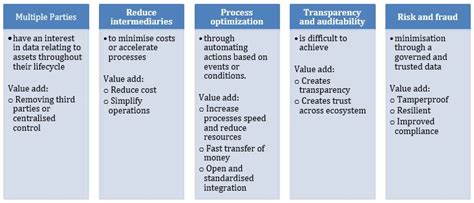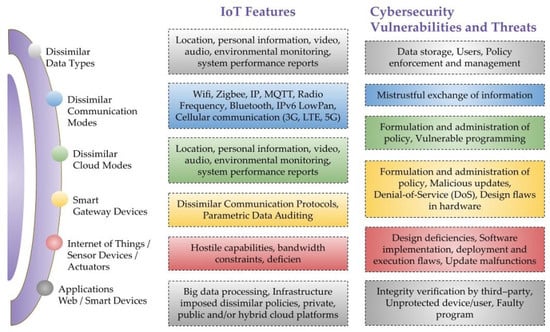In the rapidly evolving landscape of blockchain technology, cryptocurrency exchanges play a crucial role in facilitating digital asset trading. This comprehensive analysis delves into the intricacies of cryptocurrency exchanges, exploring the distinctions between centralized and decentralized platforms, and highlighting essential features for traders. As the market continues to grow, understanding current trends, security protocols, and regulatory compliance becomes vital for ensuring a safe trading experience. Additionally, we will examine trading fees, liquidity, and user experience, providing insights into how these factors influence exchange performance. Through case studies of popular platforms, this article aims to equip readers with the knowledge needed to navigate the cryptocurrency exchange landscape effectively.
Discover the intricacies of this topic with hotelfiler.com
1. Types of Cryptocurrency Exchanges: Centralized vs. Decentralized Platforms
Cryptocurrency exchanges are primarily categorized as either centralized or decentralized platforms. Centralized exchanges (CEXs) are operated by companies, acting as intermediaries to facilitate trades between users. These exchanges offer user-friendly interfaces, sophisticated trading features, and high liquidity, attracting both novice and experienced traders. However, CEXs require users to entrust their funds and personal information to the exchange, raising concerns about security.
Decentralized exchanges (DEXs), on the other hand, operate without a central authority, enabling users to trade directly with each other via smart contracts. This decentralized structure fosters enhanced privacy and control over funds, as users maintain ownership of their assets throughout the trading process. While DEXs generally offer lower liquidity and can pose a steeper learning curve, their emphasis on security and user autonomy makes them attractive to those prioritizing these factors.
The cryptocurrency market is steadily developing, and it’s vital for traders to grasp the nuances between different trading platforms. Each exchange possesses unique strengths and weaknesses, which directly impact how users interact with the crypto landscape and how they can tailor their trading strategies and security measures accordingly.

2. Key Features to Look for When Choosing a Cryptocurrency Exchange
Choosing the right cryptocurrency exchange is crucial for a secure and efficient trading experience. Several key features demand careful consideration. First, evaluate the exchange’s security measures, such as two-factor authentication (2FA), encryption protocols, and cold storage options for user funds. A reputable exchange will prioritize asset security and have a proven history of safeguarding its users’ investments.
Next, assess the user interface and experience. An effective platform should be user-friendly and easy to navigate, accommodating both novice and experienced traders. Furthermore, consider the breadth of cryptocurrencies available for trading, as a wide selection can expand your trading possibilities.
Liquidity is another crucial factor. Higher liquidity ensures faster transactions and better price stability. Furthermore, examine the trading fees and any additional costs associated with deposits and withdrawals, as these can significantly impact overall profitability.
Finally, assess the availability of customer support. Prompt and expert assistance is crucial for resolving any problems that might occur during trading. These features, when considered together, enhance the overall satisfaction of the cryptocurrency trading experience.

3. Trends Shaping the Future of Cryptocurrency Exchanges
The cryptocurrency exchange landscape is undergoing rapid evolution, driven by several key trends that are shaping its future. One notable trend is the increasing adoption of decentralized finance (DeFi) platforms. These platforms empower users to trade directly, eliminating the need for intermediaries and enhancing privacy and control over their assets. As DeFi gains momentum, more exchanges are incorporating decentralized features to attract users who value autonomy.
A growing emphasis on regulatory compliance is another trend. As governments globally implement more defined regulations, exchanges must adjust to fulfill legal requirements. This evolution not only cultivates trust among users but also creates a more stable trading environment.
Moreover, the emergence of automated trading tools and algorithmic trading is revolutionizing the way individuals engage with exchanges. These technologies empower traders with sophisticated analytics and execution strategies, leading to more efficient trading practices.
Furthermore, the inclusion of fiat on-ramps is gaining crucial importance, enabling users to seamlessly convert traditional currencies into cryptocurrencies. These developments, collectively, are laying the groundwork for more secure, user-friendly, and compliant cryptocurrency exchanges within the dynamic market.

4. Security Protocols and Measures: Safeguarding User Funds and Data
Cryptocurrency exchanges must prioritize security protocols to safeguard user funds and data. Robust encryption methods are crucial for protecting sensitive information during transactions and storage. Exchanges should implement end-to-end encryption to prevent unauthorized access.
Two-factor authentication (2FA) provides an extra layer of security by requiring users to verify their identity using a secondary device, making it much harder for unauthorized individuals to access accounts. Regular security audits and vulnerability assessments are equally important, as they enable exchanges to identify and address any potential weaknesses within their systems.
In addition, many exchanges employ cold storage to safeguard the bulk of user funds, keeping them offline and minimizing the likelihood of hacking incidents. Insurance policies may also be available to protect users against potential losses stemming from security breaches.
Openly communicating security practices fosters user confidence, creating a more secure trading environment. Through the implementation of robust security measures, exchanges can substantially mitigate the risk of data breaches and unauthorized access, guaranteeing a safe trading experience for all participants.
5. Regulatory Compliance and Its Impact on Cryptocurrency Exchanges
Cryptocurrency exchanges are increasingly navigating a landscape shaped by regulatory compliance. As governments worldwide solidify frameworks for cryptocurrency trading, exchanges must adapt their operations to adhere to these regulations. This compliance often entails implementing Know Your Customer (KYC) and Anti-Money Laundering (AML) procedures, necessitating the verification of user identities to deter illicit activities.
Regulatory compliance has a two-sided impact on exchanges. While it promotes trust by signaling safety and legitimacy, leading to higher user adoption and trading volume, it also presents challenges for smaller exchanges. The regulatory burden can hinder their ability to compete with larger platforms that have more resources.
Furthermore, complying with regulations can increase operational costs, potentially impacting trading fees. Therefore, effectively navigating this evolving regulatory landscape is essential for exchanges to maintain their viability and ensure a secure trading environment for their users.
6. Trading Fees, Liquidity, and Market Pair Variety: What to Consider
Selecting a cryptocurrency exchange demands careful consideration of trading fees, liquidity, and the diversity of available market pairs. Trading fees can vary substantially across exchanges, often being structured as a percentage of each trade or a flat fee. Reduced fees can boost profitability, particularly for high-frequency traders, making a thorough comparison of fee structures essential before choosing a platform.
Liquidity is another crucial factor. High liquidity ensures swift trade execution at stable prices. Conversely, an exchange with low liquidity can lead to slippage, where the final execution price deviates from the expected price, negatively affecting trading efficiency.
Furthermore, the diverse selection of market pairs available enables traders to pursue a wide range of investment opportunities. Exchanges that offer a broader spectrum of cryptocurrencies and trading pairs can accommodate diverse trading strategies and preferences. Considering these factors will assist users in choosing an exchange that aligns with their trading objectives, ultimately enhancing their overall experience within the cryptocurrency market.
7. User Experience and Interface Design: Enhancing Accessibility and Usability
A successful cryptocurrency exchange hinges on its user experience (UX) and interface design, which directly impact accessibility and usability for traders. A user-friendly interface, designed for both novice and experienced traders, promotes ease of navigation. Essential design components, such as clear layouts, readily accessible features, and well-organized information, contribute to a more enjoyable and efficient trading experience.
Responsive design is crucial, given the increasing number of users accessing exchanges through mobile devices. A mobile-friendly interface enables traders to effortlessly manage their accounts and execute trades from any device. Furthermore, the inclusion of educational resources, including tutorials and guides, empowers new users to grasp trading concepts and platform features.
Real-time data visualization is crucial, offering users current charts and metrics to guide their trading choices. Accessibility features, including adjustable font sizes and high-contrast themes, enhance usability for a broad range of users.
By focusing on user experience and crafting intuitive interfaces, cryptocurrency exchanges can cultivate a welcoming environment that encourages engagement and retention, ultimately propelling growth within the competitive digital asset market.
8. Case Studies: Comparing Popular Cryptocurrency Exchanges and Their Performance
A successful cryptocurrency exchange hinges on its user experience (UX) and interface design. These elements directly impact the accessibility and usability for traders, regardless of their experience level. An intuitive interface allows users to navigate the platform effortlessly. Key design elements contributing to a seamless trading experience include clear layouts, readily accessible features, and well-organized information.
Responsive design is crucial, given the increasing number of users accessing exchanges through mobile devices. A mobile-friendly interface facilitates seamless account management and trade execution for traders, irrespective of their device. Furthermore, integrating educational resources like tutorials and guides empowers new users to grasp trading concepts and platform features.
Real-time data visualization is crucial, offering users current charts and metrics to guide their trading choices. Accessibility features, such as adjustable font sizes and high-contrast themes, enhance usability for a wider range of users.
Cryptocurrency exchanges can cultivate a thriving ecosystem in the competitive digital asset market by emphasizing user experience and crafting intuitive interfaces. This approach fosters engagement, encourages user retention, and ultimately fuels growth.
User experience (UX) and interface design are critical components of a successful cryptocurrency exchange, significantly impacting accessibility and usability for traders. An intuitive interface allows users, whether beginners or experienced traders, to navigate the platform with ease. Key design elements include clear layouts, easy-to-find features, and well-organized information, which can enhance the overall trading experience.
Responsive design is also vital, as more users access exchanges via mobile devices. A mobile-friendly interface ensures that traders can manage their accounts and execute trades seamlessly, regardless of their device. Additionally, incorporating educational resources, such as tutorials and guides, can empower new users to understand trading concepts and platform features.
Real-time data visualization is another essential aspect, providing users with up-to-date charts and metrics to inform their trading decisions. Accessibility features, such as adjustable font sizes and high-contrast themes, further improve usability for a diverse audience.
By prioritizing user experience and thoughtful interface design, cryptocurrency exchanges can create a welcoming environment that fosters engagement and retention, ultimately driving growth in the competitive digital asset market.
hotelfiler.com
